What comes to your mind when you think of Chechnya, and Grozny in particular? A bombed-out city, bearded men and veiled women? Well, you could not be more wrong. When I visited in August 2019, not only the capital, but an entire country did not show the slightest traces of war. I was baffled, it was only 15 years earlier that a brutal war was raging in this country between Islamic separatists and the Russian army. What erased this part of Chechnya’s recent history was the program “Chechnya without Traces of War”. It started in 2005, one year after the war ended and made Chechnya, cities and also rural areas, look brand new. Nothing should remind of the horrible war, no ruins, abandoned buildings nothing.
How did I travel?
I arrived in Chechnya/Grozny with a small group of travellers who had met in North Ossetia and travelled a week together. This leg of the trip, North Ossetia/South Ossetia and Chechnya was organised by Lupine Travel.
After my travel compangnons returned to their home countries, I stayed on. I travelled more of Chechnya and spent three weeks in Dagestan on my own. This is very easy, since minibusses, called Marshrutkas go everywhere, anytime. And they are super cheap, the drivers helpful. I once had to take four different marshrutkas, through four different republics in one day: North Ossetia, Ingusetsia, Chechnya, Dagestan. The drivers literally passed my on to the next bus, plus my fellow travelers guided me to the right bus station or platform. It was the kindness and support that I received everywhere which made this trip so special and unforgetable.
Grozny – Las Vegas meets Mosque
High-rises with colorful lights rolling over their façade and a beautiful gigantic mosque was what I saw when looking out of my hotel room window. I felt like in the midst of Dubai.
Grozny’s Akhmad Kadyrov Mosque
It was already pitch dark after I checked in my hotel and I wondered if it was safe to walk around. I mean this was Grozny, a city I had never heard or read anything positive about. From my window I had a view of the gigantic and beautiful mosque. So my curiosity won over, I took my camera and headed out. Soon I was surrounded by little kids on scooters, families and young women strolling around some wearing scarves, most didn’t. I had expected nothing like this and felt a bit embarrassed about my initial concerns.
I spent hours taking photos in the most gigantic and truly beautiful Akhmad Kadyrov Mosque. It was opened in 2008 and named after the former president, who only ruled Chechnya for about 7 months, from October 2003 to 9 May 2004. He was assassinated while he was watching a parade. A bomb went off that was planted under his seat. Islamic separatists did not forgive him for switching over to Putin’s side at the beginning of the Second Chechen War.
Even in the evening the mosque was busy with tourists from Chechnya and other parts of Russia. Dress code for women was a long colorful coat and a head scarf. During my stay in Grozny I came back several times to take photos at different times of the day.
But there is another less glamorous side of Grozny, the small houses that reminded me very much of the houses in Vladikavkaz/North Ossestia but also of houses in rural Austria. The big gates need to be high enough for a horse carriage to pass through. In Ossetia the gates are even higher, so that a horseman could ride through it without having to bow. Well those proud Caucasians.
Grozny’s other sights
Most of Grozny’s sights are near the big mosque: Grozny’s oldest and fanciest road, Putin Boulevard with it fancy shops and Restaurants.
https://youtu.be/f6lwQe4k9cc
The name came as a bit of a surprise to me. I am from a country where public places are not named after politicians, who are still alive.
The little flower park is a good place to watch the locals taking selfies. At the end of the park is the Church of Archangel Michael, a beautiful orthodox church.
Another great place to hang out is Grozny’s pedestrian zone lined with restaurants, cafés, sushi bars and even an American Steak House.
The Museum of Akhamd Kadyrov I did not visit, since I figured I would just be another shrine to the Kadyrovs, I only strolled around the outdoor part.
Itum Kale – ancient fortress, watchtower and politics
Following a windy road up into the mountain for about two hours brought us to the in the village of Itum Kale, with its medieval fortress, a watch tower and a small museum.
There I made gruesome discovery. When a lady proudly pointed out the big painting of a famous local, Khuseyn Isayev, the former head of the Chechen Parliament, I noticed something strange. The date of his death, 9th Mary 2004, was the same as on the photo taken of him and the former President Akhmad Kadyrov, right next to it. This is what I was told then: The photo that shows the two was taken minutes before a bomb placed under the President’s seat went off and killed both.

Photo of Akhmad Kadyrov and Khuseyn Isayev, head of th Chechen Parliament, minutes before a bomb killed both of them
Photomania at Nikholoi Waterfalls
On the way to Itum Kale we passed the Nikholoi Waterfalls, which are not that spectacular but the walk through the woods is really pleasant. What made it an everlasting experience was meeting a really nice Chechen family and taking lots of photos with them. There is a nice restaurant and a couple of chalets to rent at the very sight.
The road back to Grozny runs along Arun Gorge, with its stunning scenery. At one point, the Uskaloi Twin Towers sit right on the banks of the river and I wondered what would happen to them if there is ever a flooding.
Lake Kezenoyam – deep and blue
Getting to this deep lake high up in the Caucasian Mountains (1.900m) means driving high up onto a mountain road and then meandering down. Climbing was a bit frustrating because thick fog was setting in and I was afraid I would not get a glimpse of the lake. The higher we got the less we saw, at one point we stopped for tea. The place was completely fogged in, a local lady was selling cheese to Russian tourists and local men were showing off their cattle. A rather surreal setting.
When we arrived at Lake Kezenoyam, the sun was shining brightly and Chechen tourists got ready for a fun weekend, which included picnics in cozy little chalets, barbecues, taking onto the lake in a rowing boat and some even dared to put their feet into the ice-cold water. The nearby hotel/restaurants is top-notch and I wished I had the time to stay on for a couple of days.
The Chechen Genocide 1944
On Stalin’s order about 650.000 Chechen and Ingush were deported to central Asia, mostly Kazakhstan, in February 1944. Many did not survive the three-week long trip in cattle trains in freezing temperatures. Nothing and nobody expected them there, many built igloos to survive. Only in 1957 when Nikita Khrushchev reversed many of Stalin’s policies, including the deportation of nations, could they return to their homeland.

Castle train used to deport Ingush and Chechnen people to Central Asia in 1944, photos was taken in outdoor Museum in Magras, Ingushetsia
Many did not return for much longer, like Ibrahim, who I met in Grozny. His grandfather was deported in 1944, he was born in Kazakhstan, but the family did not come back to Chechnya until 1992. Ironically he could not stay long in Grozny, but had to flee from the war to Ingushetia and came back in 2002
Symbols of Chechnya’s rebirth and tragic past
Apart from Grozny’s flashy downtown, other places display the same strange “newness”. The enormous mosque in Shali was finished In August 2019 right when I visited. The whiteness is simply blinding, including the buildings right next to it.
Even the villages I passed through were super neat: the walls of the red brickhouses were shining flawlessly in the sun, the elaborately decorated iron gates as well. All this cannot possibly have been done by the Chechen government, but Russia must have pumped lots of money into this. The entire republic feels strange feel compared to Ossetia, where you see lots of old, delipidated buildings. That’s what bothered me about Chechnya, there seems to be nothing old, everything, is brand new and squeaky clean. Nothing is run down, shabby or dirty.
The only sign of the war are cemeteries with graves that are marked by long poles with a kind of little metal flag. These are graves of so-called martyrs. But I would not have noticed unless I was told by locals.
Chechen Oddities
Photos of President Kadyrov, most likely father and son, are omnipräsent in Chechnya, you can hardly take of photo of a sight without getting their determined look as well. Equally numerous are trailers with beehives in the countryside.

Most drivers in Chechnya have small computers installed in their Cars warning of police cars and radar, in Chechnya this is legal



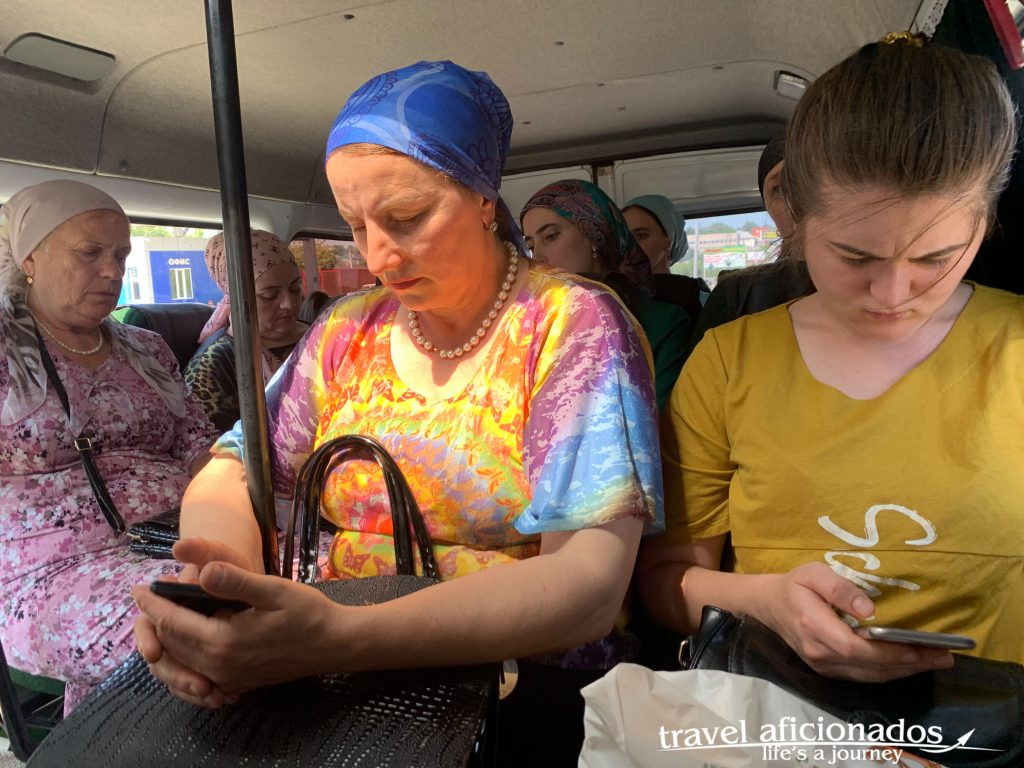
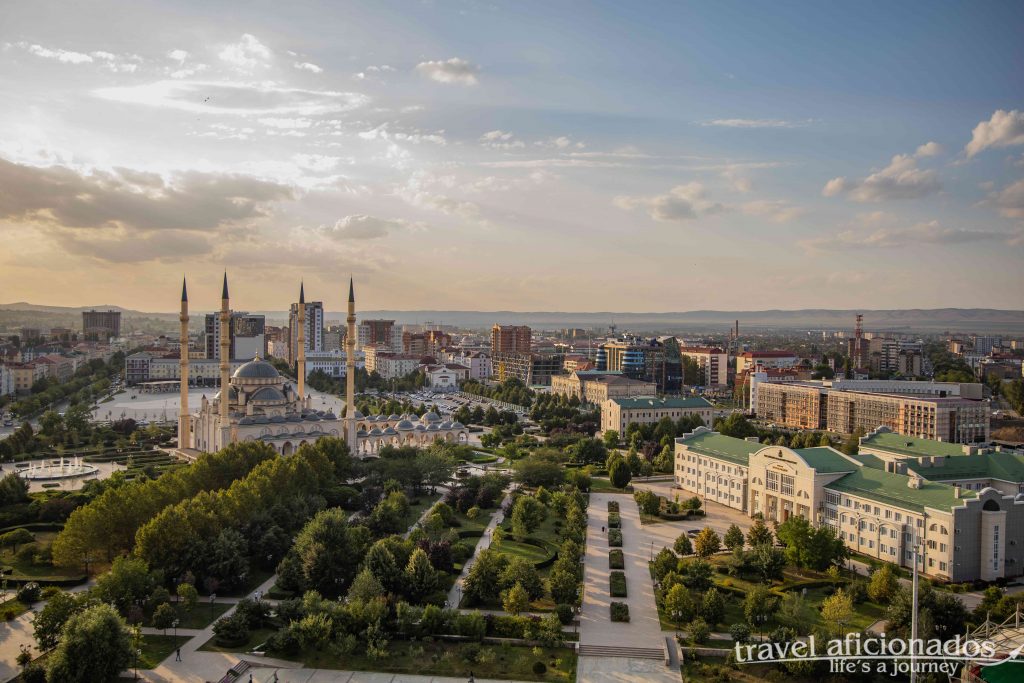
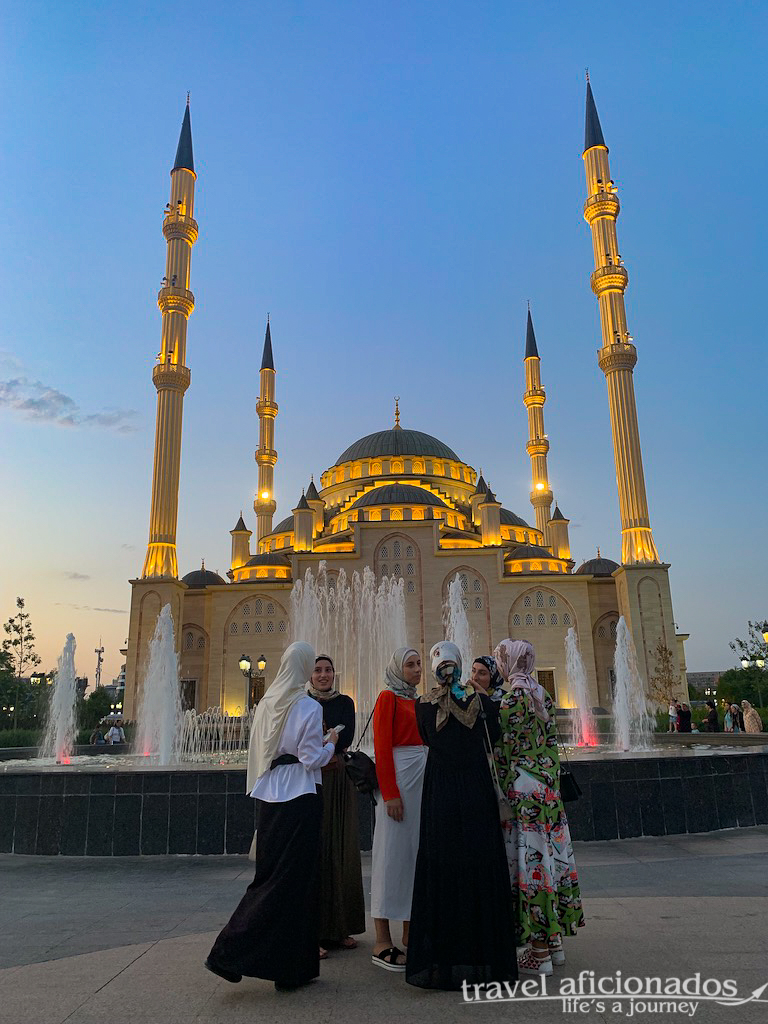



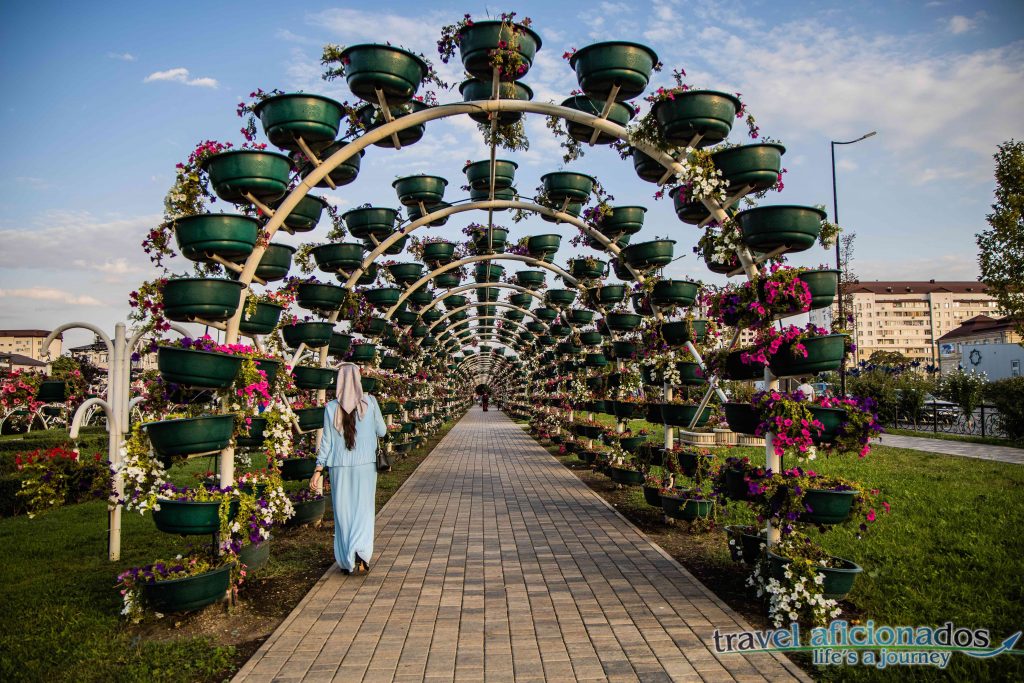
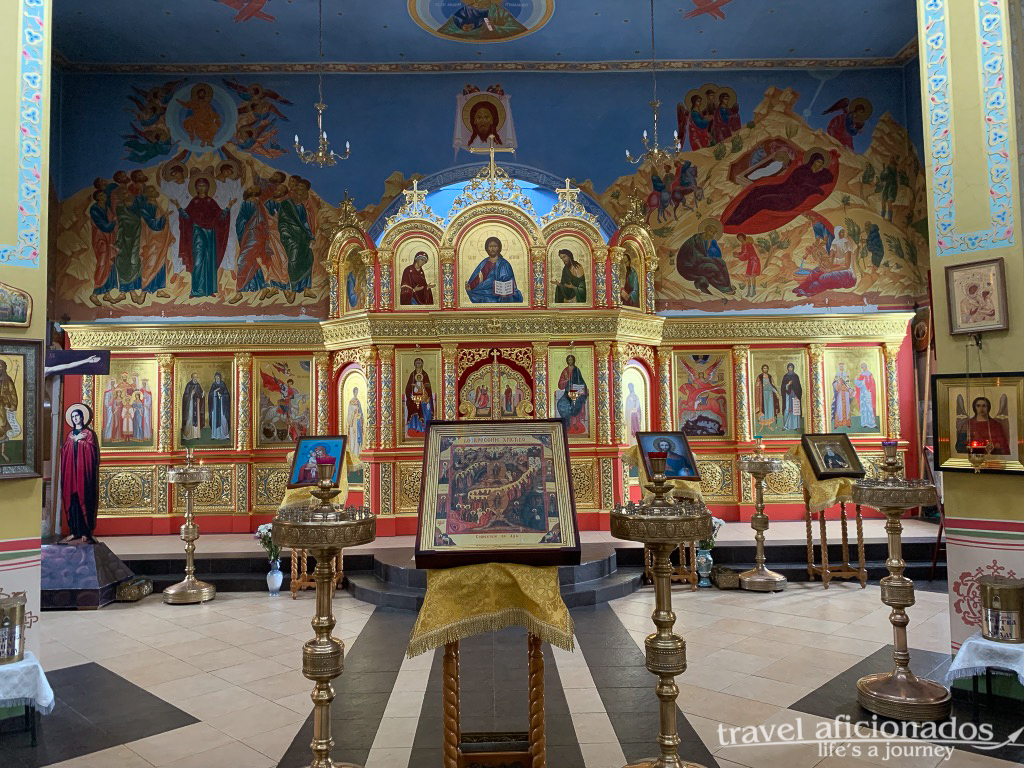
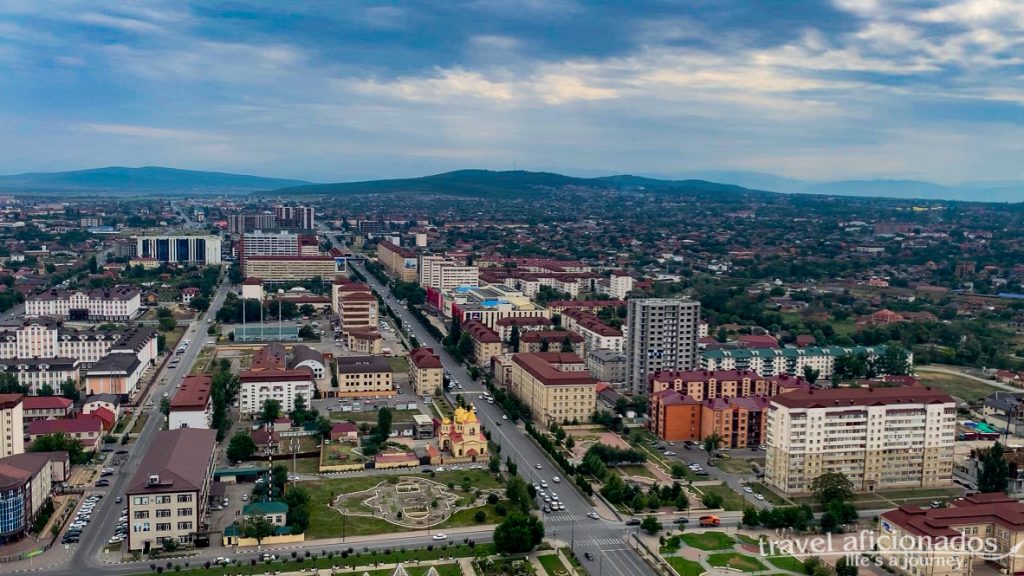
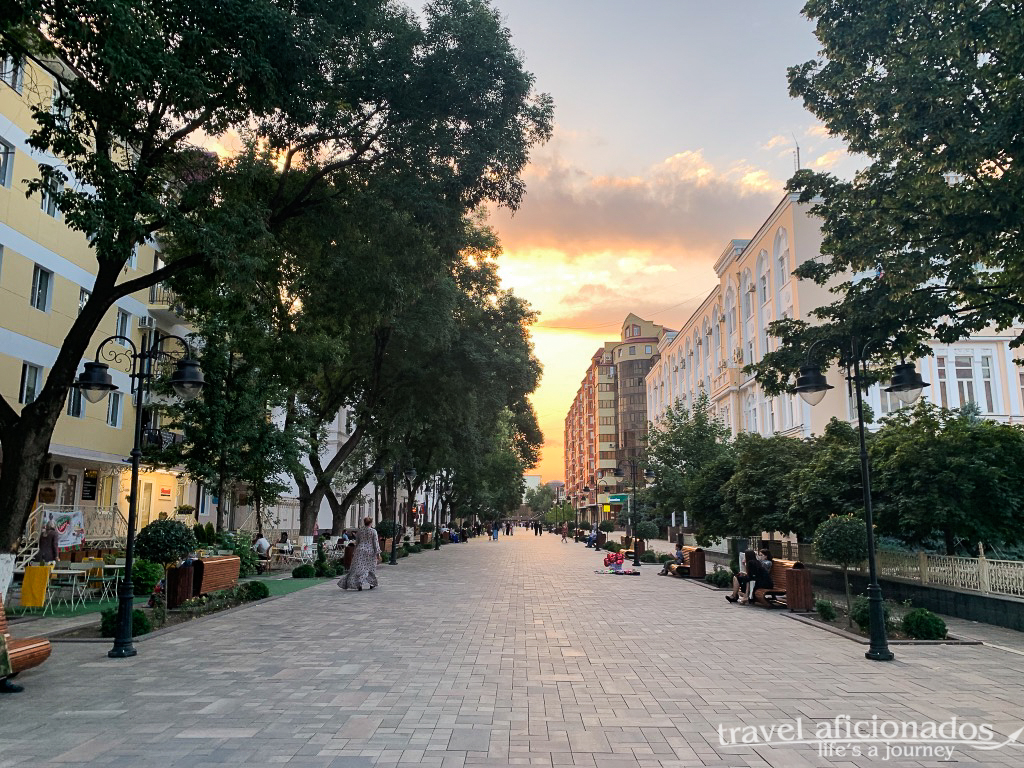



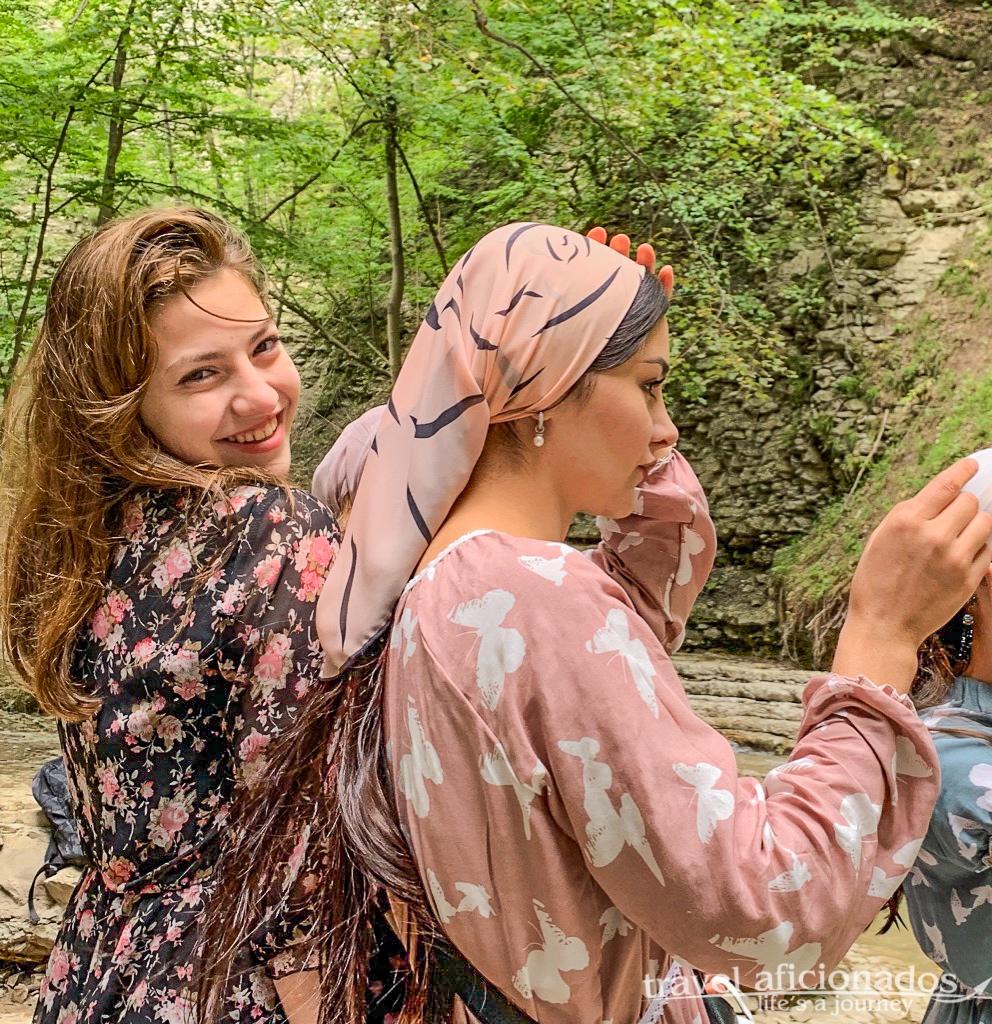


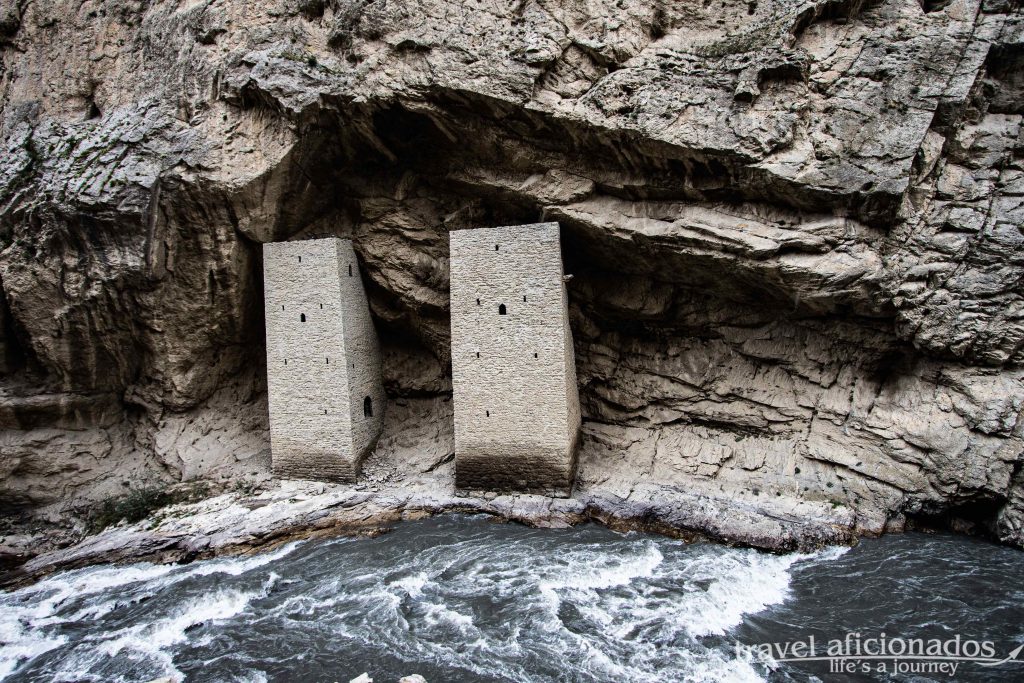
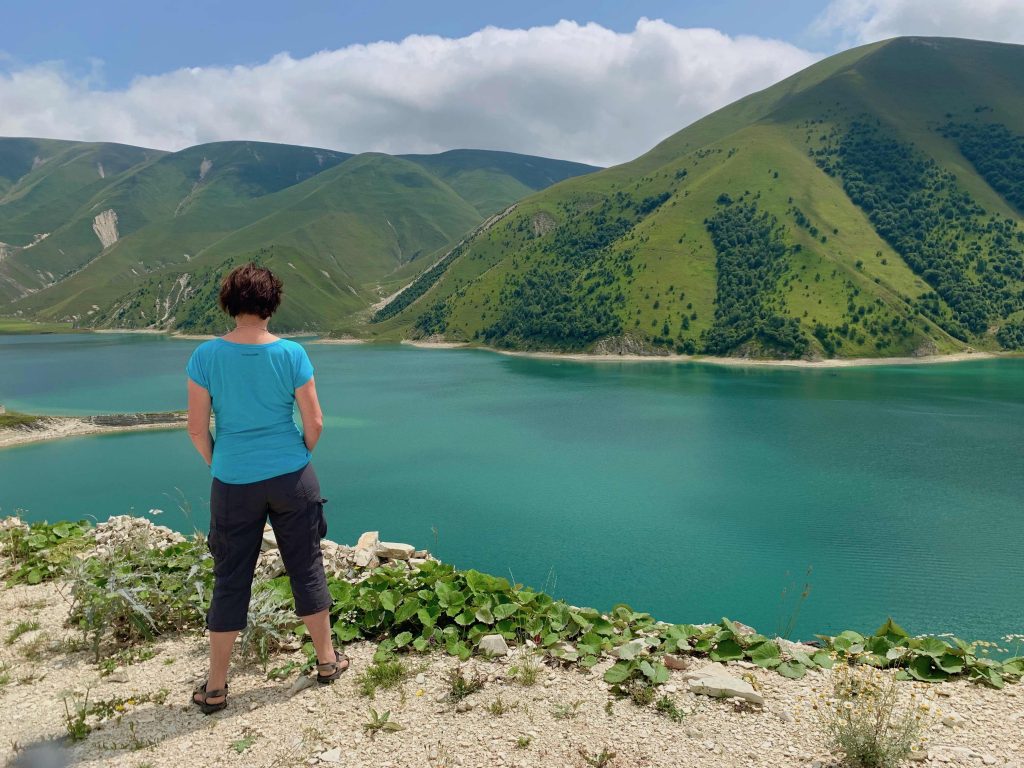
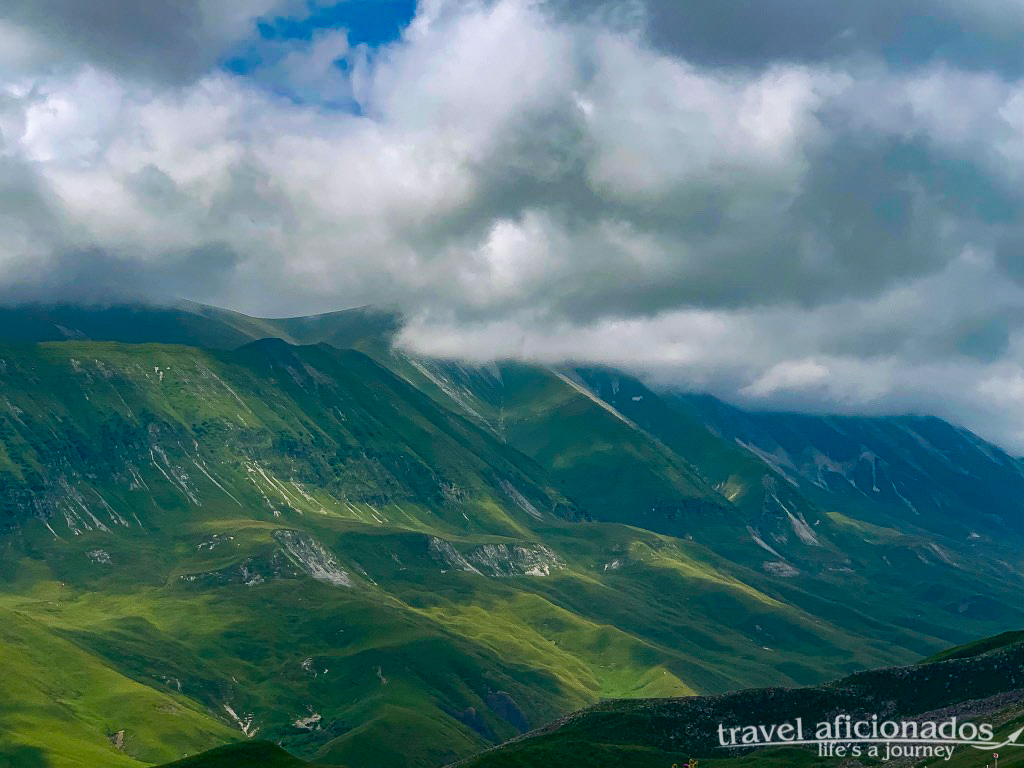



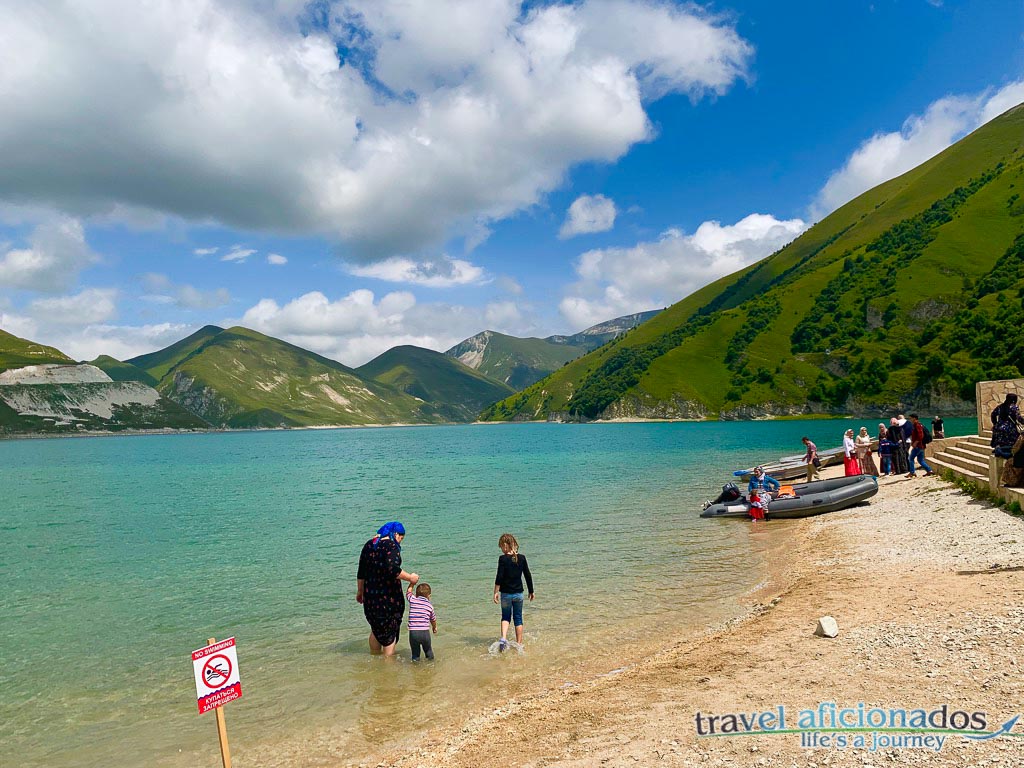
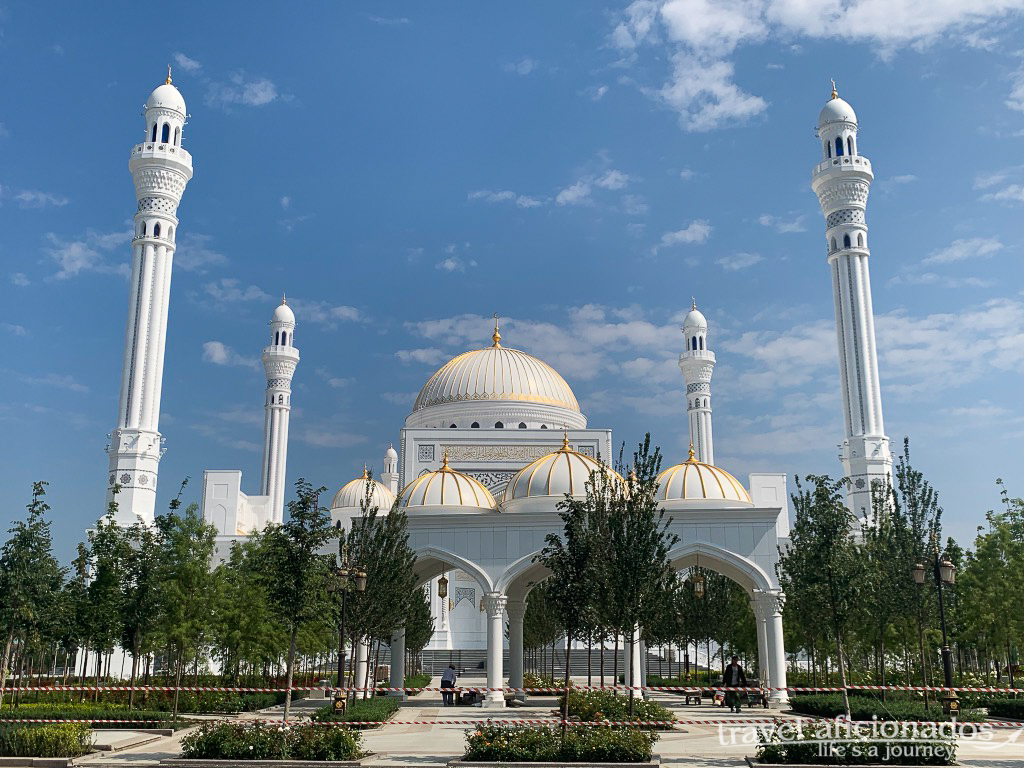


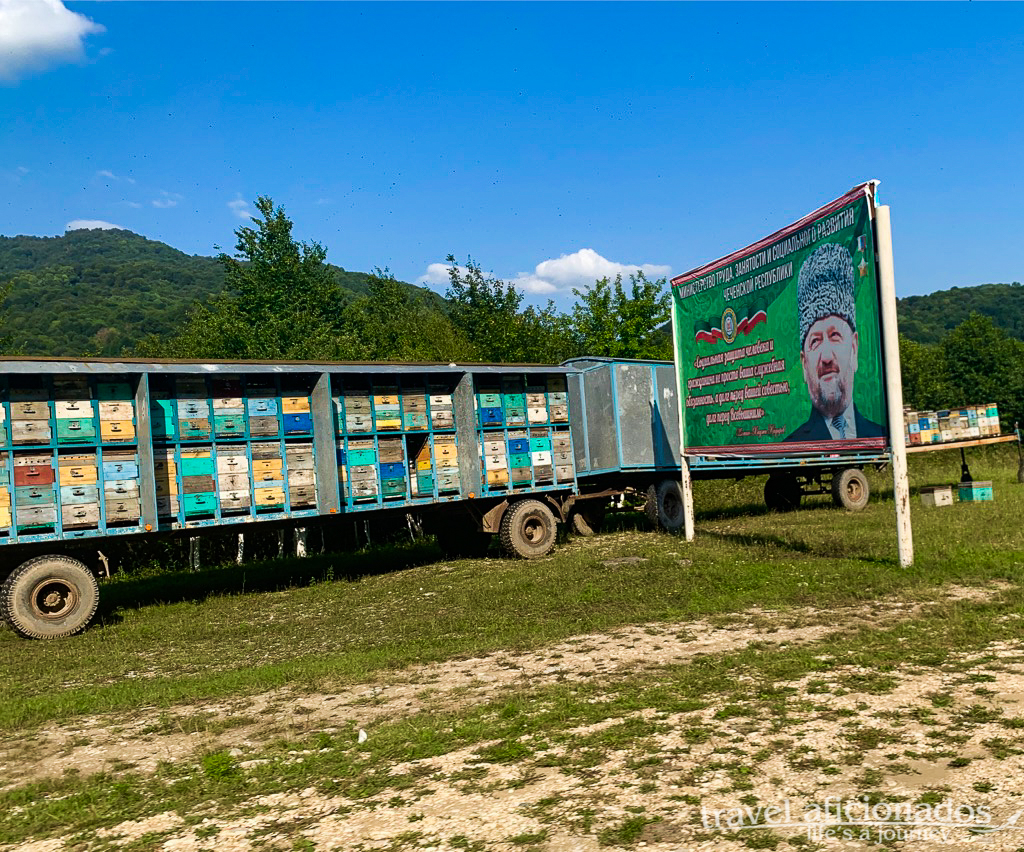
No comments yet.